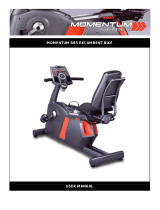Microchip Technology Curiosity LPC is a development board designed for rapid prototyping and development of embedded systems based on Microchip's low-pin count microcontrollers. It features an integrated programmer and debugger, allowing for easy programming and debugging of target microcontrollers without the need for external tools. The board includes a range of peripherals, including LEDs, buttons, and a mikroBUS™ expansion header, providing flexibility for interfacing with various external devices and sensors.
Microchip Technology Curiosity LPC is a development board designed for rapid prototyping and development of embedded systems based on Microchip's low-pin count microcontrollers. It features an integrated programmer and debugger, allowing for easy programming and debugging of target microcontrollers without the need for external tools. The board includes a range of peripherals, including LEDs, buttons, and a mikroBUS™ expansion header, providing flexibility for interfacing with various external devices and sensors.



















-
 1
1
-
 2
2
-
 3
3
-
 4
4
-
 5
5
-
 6
6
-
 7
7
-
 8
8
-
 9
9
-
 10
10
-
 11
11
-
 12
12
-
 13
13
-
 14
14
-
 15
15
-
 16
16
-
 17
17
-
 18
18
-
 19
19
-
 20
20
-
 21
21
Microchip Technology Curiosity LPC User manual
- Type
- User manual
- This manual is also suitable for
Microchip Technology Curiosity LPC is a development board designed for rapid prototyping and development of embedded systems based on Microchip's low-pin count microcontrollers. It features an integrated programmer and debugger, allowing for easy programming and debugging of target microcontrollers without the need for external tools. The board includes a range of peripherals, including LEDs, buttons, and a mikroBUS™ expansion header, providing flexibility for interfacing with various external devices and sensors.
Ask a question and I''ll find the answer in the document
Finding information in a document is now easier with AI
Related papers
-
Microchip Technology HPC User manual
-
Microchip Technology MPLAB User manual
-
Microchip Technology Curiosity High Pin Count User manual
-
Microchip Technology MPLAB REAL ICE User manual
-
Microchip Technology MPLAB PICkit 4 User manual
-
Microchip Technology dm164136 Quick start guide
-
Microchip Technology MPLAB ICD 4 User manual
-
Microchip Technology AT42QT1010 User manual
-
Microchip Technology dsPICDEM MCHV-3 User manual
-
Microchip Technology Curiosity PIC32MZ EF 2.0 User manual
Other documents
-
MICROCHIP DM182026 Operating instructions
-
MICROCHIP PG164130 Operating instructions
-
Altronix RB5 Datasheet
-
MICROCHIP DV161001 Operating instructions
-
MICROCHIP DV164055 User manual
-
MICROCHIP DV244140 User manual
-
MICROCHIP 50003215A Compiler Advisor in MPLAB X IDE User guide
-
Mikroe Air Quality Click User manual
-
MICROCHIP DM330027 Operating instructions
-
 Smooth Fitness RB5 User manual
Smooth Fitness RB5 User manual






















